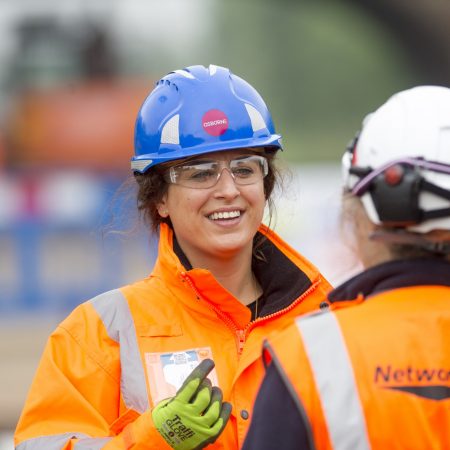Women in Construction: Just How Much Progress Have We Made?
Let’s start with some good news- the number of women entering STEM related apprenticeships grew by 6% between 2016 and 2017. The percentage of board positions in construction firms has grown from 12.5% in 2010 to around 20%.
These are encouraging trends; but the job is far from complete. FTSE 100 boardrooms are hardly an exemplar for gender equality but even they manage 28% female representation.
We still have a very wide gulf between where we are, and an industry that is a perfectly natural choice for women. Where the culture is consistently welcoming and where gender has no bearing on opportunities to progress.
In January 2018, Randstad surveyed more than 5,400 construction, property, engineering and rail professionals to find out the key barriers, limitations and challenges that women face on the path to senior leadership.
Out of 1,200 people that had experienced gender discrimination (33%), 60% were women. Three quarters (73%) of women said they felt they had been passed over for projects because of their gender and not their skills, compared to just 27% of men.
Do we Know when we are Discriminating?
Unconscious bias remains an issue and it’s something we are working hard to overcome. The language used in job descriptions can be influential and simple steps such as removing names and gender from applications can help a great deal.
Given the skills crisis and the need to transform the way the industry works, we simply need as many talented people as we can get. We also know that performance is nothing to do with gender when people are given the same opportunities.
If you needed evidence for this we could point out several star performers among our female workforce, including Safia Whitwham, an Assistant Site Manager from our Infrastructure business who recently won ‘Most Promising Trainee Civil Engineer’ at the CECA (Civil Engineering Contractors Association) awards and ‘One to Watch’ at the ICE (Institution of Civil Engineers) South East England Awards.
Despite her talent and success, Safia has experienced how unconscious bias can work: “On more than one occasion people have assumed I’m a PA at a meeting. On another occasion, I arrived on-site to be told that it was closed to the public, despite wearing my company jacket with an orange high-vis on display in my passenger seat.”
This constant need for women to prove their professional competence before engaging in tasks that foster development, means that females often lag behind their male counterparts, causing them to be passed up for important opportunities.
A New ‘Normal’
To keep moving forward we have to confront issues of bias and make a conscious effort to eliminate the effects. We don’t claim that we have yet got everything right at Osborne but Safia is happy to report that her experience has been, in the main, extremely positive: “some of the greatest progress I’ve made has emerged through my work with people who have had daughters of a similar age to me. They’ve given me support and respect that’s been reflected by others on-site, making it much easier for me to excel. Mentoring systems outside of usual management functions are incredibly valuable in the development of women engineers as business leaders.”
In other words, it largely comes down to the culture we create, and clearly the businesses that do the best job of creating a welcoming culture for all people of talent will be the biggest winners. Find out more about how Osborne’s Equality, Diversity and Inclusion policy here.

